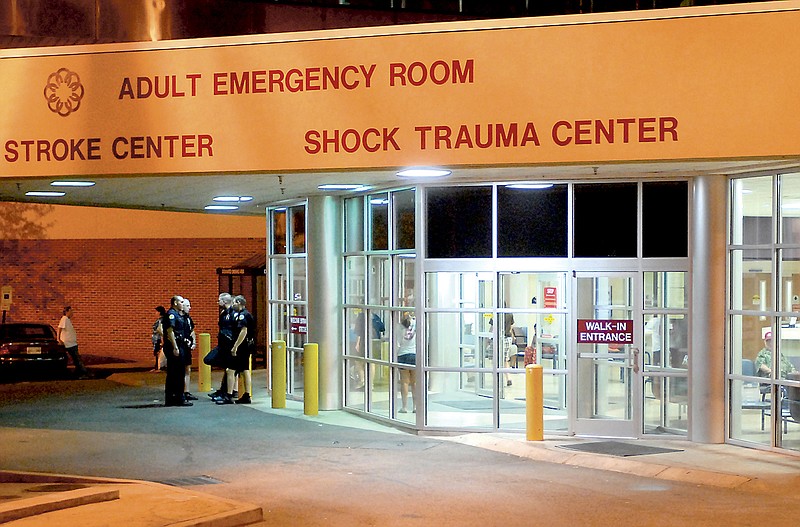It wasn't exactly worthy of "you can keep your doctor," "you can keep your health care plan" or "your premiums will go down," but former President Barack Obama also boasted the Affordable Care Act potentially would reduce emergency room visits.
"One of the areas where we can potentially see some saving is - a lot of those patients are being seen in the emergency room anyway, and if we are increasing prevention, if we are increasing wellness programs, we're reducing the amount of emergency room care, then that frees up doctors and resources to provide the kind of primary care that will keep people healthier, but also allow them to see more patients and hopefully give more time to patients, as well," he said in 2009.
In fact, just the opposite happened.
In a 2015 American College of Emergency Physicians survey, three out of four respondents said they had seen a rise in emergency room patients since the Affordable Care Act was fully implemented a year earlier.
Regionally, emergency room visits increased 27 percent since 2014 among Blue Cross Blue Shield of North Carolina members who had their coverage through the Affordable Care Act's marketplace.
Blue Cross Blue Shield of Georgia, in an effort to trim losses on those who have coverage through the federal health care bill, said this week it would charge Affordable Care Act marketplace patients for emergency room visits if the visit is not deemed an emergency.
"It kind of comes across as cold and callous maybe, the way they're doing it," said Georgia state Rep. Terry England. "But at the same time, it may be one of the few ways that you actually are able to maintain hospitals and keep the doors of hospitals open across the state."
Surveys and studies on the percentage of non-urgent emergency room care users often depend on the source of the study. Not surprisingly, they range from single digits to upwards of 70 percent.
What's clear is that emergency rooms are seeing too many patients who don't belong there, and insurers like Blue Cross Blue Shield of Georgia - the only insurer in the marketplace for 96 of the state's 159 counties - are tired of losing money on policies through the Affordable Care Act.
The new rule, which takes effect on July 1, has several caveats. It would not apply if the patient is age 13 or younger, the patient doesn't have an urgent care clinic within 15 miles, or the need for care occurs on a Sunday or major holiday.
The emergency room edict is trying to cut down on visits for the likes of a cold or sore throat. The insurer said in such cases patients should visit their personal physician, an urgent care clinic or access the insurer's 24-hour online medical service, LiveHealth Online.
Critics say patients aren't trained to diagnose themselves and "will die" because they'll be afraid to go to an emergency room and be charged for it, but we believe patients' use of common sense, together with the caveats put in place, can prevail.
But as long as there is no replacement for the Affordable Care Act, insurers will continue to make these types of decisions in order not to hemorrhage red ink on the marketplace plans.
That's why it's important for representatives of both political parties to be involved in creating a health care replacement plan. Democrats did not include Republicans in their creation of the 2010 health care bill and should continue to be held responsible for its slow demise. And Democrats refused to have anything to do with the Republicans' replacement plan early this year, so it never got off the ground.
Without some semblance of working together, the two parties will only see insurers take these drastic measures as well as raise marketplace premiums until they can reach at least a break-even point.
BlueCross BlueShield of Tennessee, for example, lost another $103 million on the Affordable Care Act individual plans in 2016 but finished the year with income of $118 million from all its insurance operations.
Despite raising its rates on individual plans by 19 percent in 2015 and 36 percent in 2016, BlueCross lost a total of $414 million on the first three years of Obamacare.
"These results show the value and importance of having different lines of business and adequate reserves to handle unforeseen circumstances," Roy Vaughn, senior vice president of communications for BlueCross BlueShield of Tennessee, said.
All insurers didn't have the same results - many were worse - but consider that a $414 million loss by one insurer over three years in one state, replicated in 50 states, would total losses of $20.7 billion over the period.
Some of those losses, in Tennessee, Georgia and all states, come from people being treated in emergency rooms for care that could be obtained in less urgent care settings.
It continues to prove that health care reform, created in a bipartisan and financially sound way, is still urgently needed.
